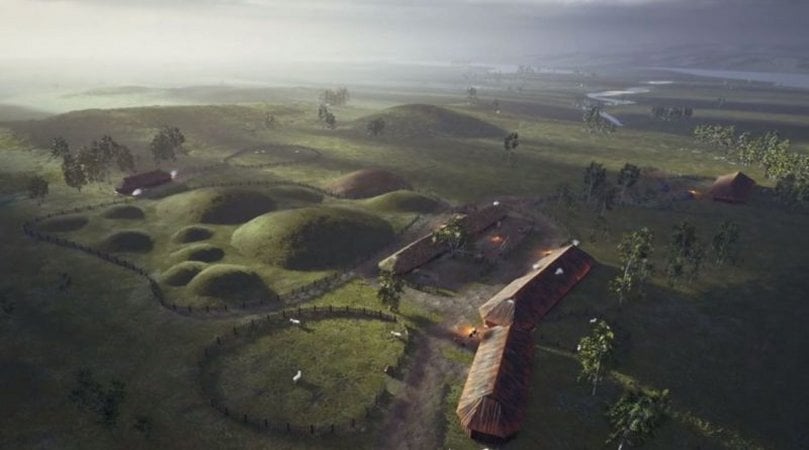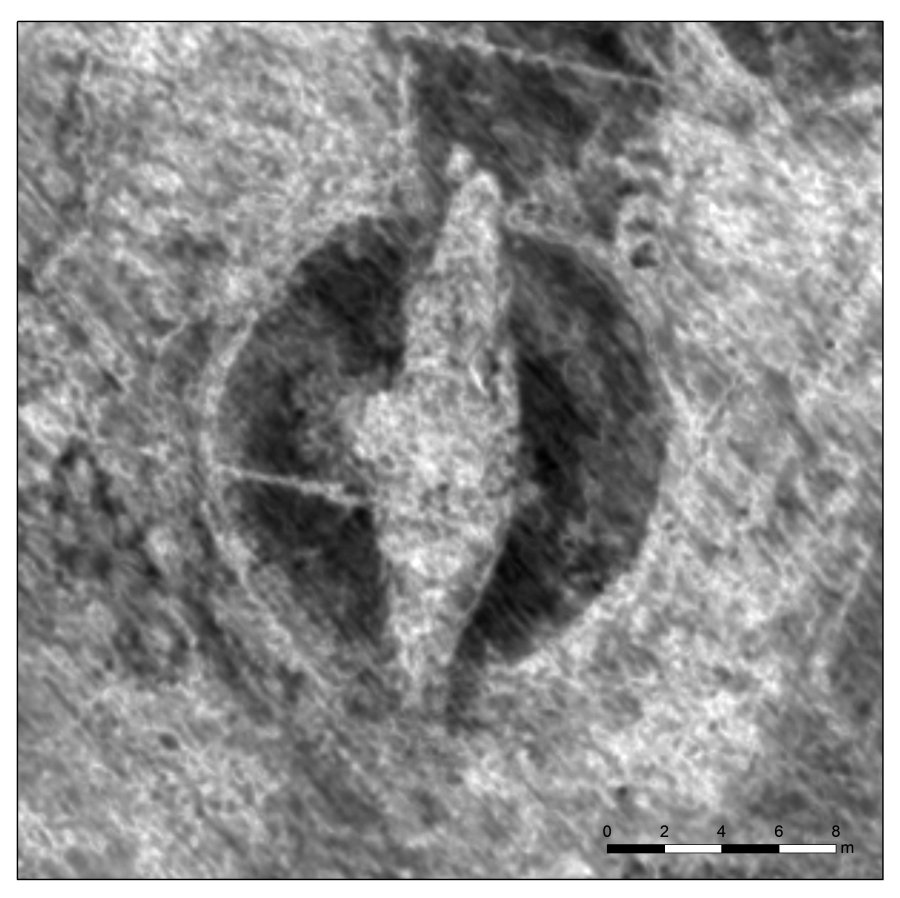Jan Bartek – MessageToEagle.com – Modern technology gives us a superb opportunity to look through the eyes of the ancient people.
Virtual tours, like this one, can take us on a wonderful journey back in time. Anyone interested in archaeology and ancient history cannot resist a chance to see how people lived thousands of years ago. The Vikings are long gone, but even they would be impressed with the 3-D reconstruction of their settlements, burial mounds, and majestic huge ships.

The reconstruction of the Gjellestad Viking ship burial site. Credit: Gjellestadstory.no
In 2018 archaeologists made an incredible discovery in Norway. Using high-resolution georadar scientists unearthed a giant Vikings ship along with a Medieval settlement and 3 burial mounds.
The discoveries were made by archaeologists from the Norwegian Institute for Cultural Heritage Research (NIKU) with technology developed by the Ludwig Boltzmann Institute for Archaeological Prospection and Virtual Archaeology (LBI ArchPro).

“We are certain that there is a ship there, but how much is preserved is hard to say before further investigation”, Morten Hanisch, county conservator in Østfold said at the time of the discovery. Today we know with certainty a giant Viking ship was unearthed at the site..
This was a unique archaeological discovery because Viking ship burials are rare. By modern standards, it might sound crude, but Viking burials were intended to be a spectacular ritual. Viking funeral traditions involved burning ships and complex ancient rituals. Based on discovered archaeological evidence it seems that the funeral boat or wagon was a practice reserved for the wealthy.
So far scientists have unearthed only three well-preserved Viking ship burials in ships in Norway and seven in entire Europe. The discovery made in Østfold was called sensational and with good reason. Archaeologists found traces of at least eight so far unknown burial mounds destroyed by ploughing. The georadar data also revealed 5 longhouses – some of them remarkably large.
Ten small research teams excavated the sites for about two weeks. Today, we can learn more about this incredible discovery.
Reconstruction of the Gjellestad Viking ship. Credit: Gjellestadstory.no
Earlier this year scientists could confirm this was with certainty a Viking ship that most likely dates from the transition to the Viking Age, which is generally considered to have started with the attack on Lindisfarne in the late 8th-century.
Unfortunately, experts also noticed the ship suffered substantial damage from fungi which is why the Directorate for Cultural Heritage recommended excavating the ship.
The Gjellestad Viking ship is huge, measuring nearly 20 meters and yet, it’s smaller and narrower than the Oseberg ship and or Gokstad ship.
A beautiful virtual reconstruction of the site has now been made available by the Norwegian website Gjellestad Story.
As explained on the site, “the burial site at Gjellestad and the obliterated burial mounds tell a story about a power struggle for control and three significant changes of authority in the area. Victors have laid claim to the area by burying their dead partially on top, or within, the preceding burials of the defeated.”
The virtual tour lets you see burial mounds and visit longhouses. Credit: Gjellestadstory.no
Preserving our archaeological sites means preserving our ancient legacy. While going on this fascinating virtual journey, you also have the chance to enter the longhouses and see what life was like during the Viking Age.
See also:
Famous Viking Warrior Eric “Bloodaxe” Haraldsson: King Of Norway
Why Were Viking Raids So Successful?
How Did Vikings Worship Their Gods?
A typical Viking home was a longhouse (langhús), that was usually 5 to 7 meters wide (16 to 23 feet). Wealthy Vikings could live in very large longhouses that could be from 15 to 75 meters long (50 to 250 feet). Inside the longhouses there were several rooms, divided by walls and sometimes a large and imposing hearth, with stones set on end in the earth, mirroring the shape of the longhouse. Ventilation and illumination were provided through smoke holes in the roof.
You may not know it, but Vikings used to burn and bury their longhouses. After a longhouse had burned to the ground, one or more burial mounds were placed on top of its remains.
You can access the magnificent virtual tour of Gjellestad Viking Ship Burial site here.
Written by Jan Bartek – MessageToEagle.com – AncientPages.com Staff Writer






